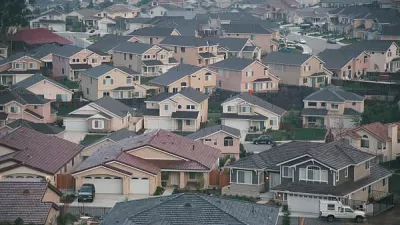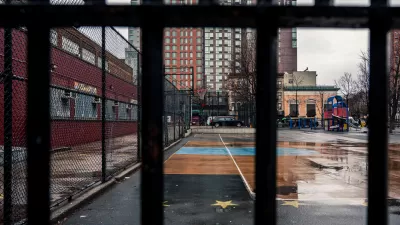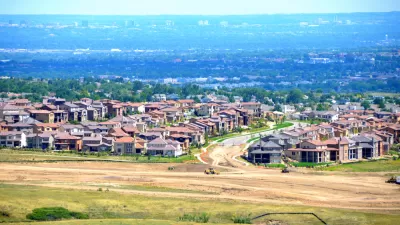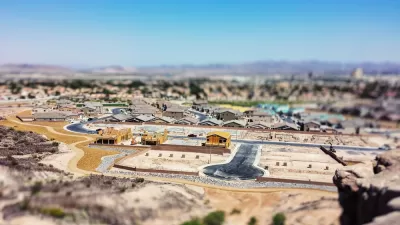A familiar argument of suburban apologists is that people prefer suburban environments over urban environments. Joe Cortright reminds us, however, that "revealed preference" doesn't tell the whole story.

"One of the chief arguments in favor of the suburbs is simply that that is where millions and millions of people actually live," according to an article by Joe Cortright that sets out to debunk that claim.
The counterargument, of course, is that people can only choose from among the options presented to them. And the options for most people are not evenly split between cities and suburbs, for a variety of reasons, including the subsidization of highways and parking, school policies, and the continuing legacies of racism, redlining, and segregation. One of the biggest reasons, of course, is restrictive zoning, which prohibits the construction of new urban neighborhoods all over the country.
Cortright wants to consider whether zoning really actually acts as a constraint on more compact, urban housing by turning to the work of Jonathan Levine and detailed in the book Zoned Out. Cortright wants to get to the bottom of the issue about whether or not there is pent up demand in the market for walkable urban places, and then whether land use regulations make it impossible to build the supply to meet that demand. The point made originally by Levine and explained here again by Cortright: it's true that in some places there is a shortage of cities and an overabundance of suburban-style house. In other metropolitan areas, there's a shortage of all kinds of housing.
FULL STORY: The myth of revealed preference for suburbs

Alabama: Trump Terminates Settlements for Black Communities Harmed By Raw Sewage
Trump deemed the landmark civil rights agreement “illegal DEI and environmental justice policy.”

Planetizen Federal Action Tracker
A weekly monitor of how Trump’s orders and actions are impacting planners and planning in America.

The 120 Year Old Tiny Home Villages That Sheltered San Francisco’s Earthquake Refugees
More than a century ago, San Francisco mobilized to house thousands of residents displaced by the 1906 earthquake. Could their strategy offer a model for the present?

Ken Jennings Launches Transit Web Series
The Jeopardy champ wants you to ride public transit.

BLM To Rescind Public Lands Rule
The change will downgrade conservation, once again putting federal land at risk for mining and other extractive uses.

Indy Neighborhood Group Builds Temporary Multi-Use Path
Community members, aided in part by funding from the city, repurposed a vehicle lane to create a protected bike and pedestrian path for the summer season.
Urban Design for Planners 1: Software Tools
This six-course series explores essential urban design concepts using open source software and equips planners with the tools they need to participate fully in the urban design process.
Planning for Universal Design
Learn the tools for implementing Universal Design in planning regulations.
Clanton & Associates, Inc.
Jessamine County Fiscal Court
Institute for Housing and Urban Development Studies (IHS)
City of Grandview
Harvard GSD Executive Education
Toledo-Lucas County Plan Commissions
Salt Lake City
NYU Wagner Graduate School of Public Service





























